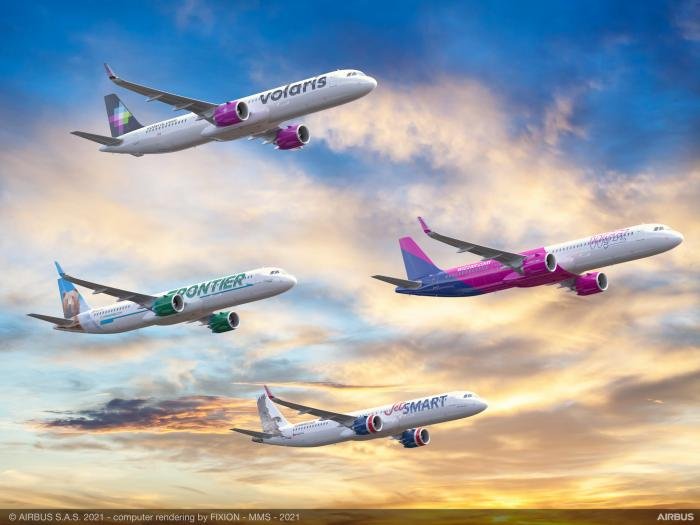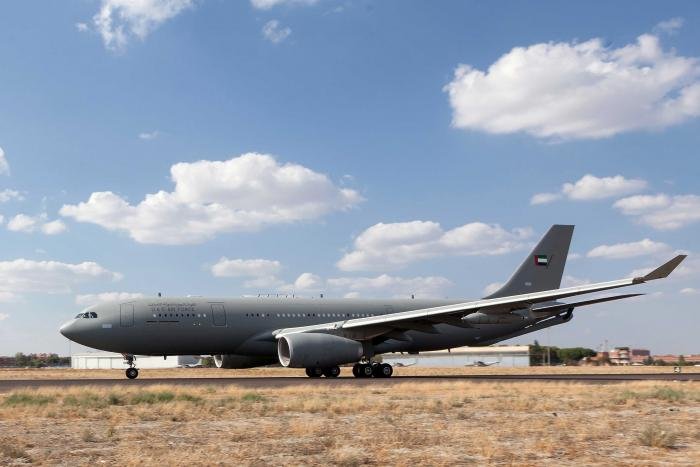In the 21 months since the last major aviation trade event, the aerospace industry has endured one of its toughest ever periods. So, when the doors of the Dubai Airshow opened on Sunday, it was the clearest signal yet that the sector is starting to return to a degree of normality. Here, Key.Aero rounds up the highlights of the year's biggest show.
A yet to be confirmed attendance of more than 85,000 people descended on the desert for five days of deals, discussions and displays, while approximately 1,200 exhibitors from the commercial aviation, military aviation, defence and space sectors made this the largest gathering the industry has seen since the Singapore Airshow in February 2020.

Commercial aviation
The commercial aviation industry has undoubtedly been very badly affected by COVID-19 and so with this year’s show, it was expected that no orderbook records would be broken.
The customary Boeing versus Airbus battle appeared not to take centre stage this year. Despite this, the European airframer got off to a flying start on day one when it secured a huge order from Indigo Partners for 255 A321neos. The deal brings the firm’s total commitment for A320 Family aircraft to a whopping 1,145 examples.

Boeing’s start to the show was also impressive, but for a different reason. The American firm’s highly anticipated 777X made its international debut in Dubai by wowing crowds with a dynamic flying display. The yet to be certified type flew directly from Seattle and landed ahead of the show on November 9.
The Chicago-based giant focused primarily on the booming cargo market by securing a number of deals with Emirates, DHL Express, Air Tanzania, and Icelease in the first three days of the show relating to 777F, 767-300BCF, 767F and 737BCF freighters.
In a boost for Boeing, new Indian carrier Akasa Air signed a deal for 72 737 MAX aircraft on day three. Worth nearly $9bn based on list prices, this commitment was the airframer’s largest of the show.
Back in the Airbus pavilion, the European manufacturer continued to snap up deals and on day two secured another giant order, this time from Air Lease Corporation (ALC) for 111 aircraft, including the first for its newly launched A350F.
Further orders from Jazeera Airways and Nigeria’s Ibon Air for A320neos and A220s pushed the airframer’s total commitments beyond 400 commercial aircraft for the whole show.

Elsewhere, Brazilian manufacturer Embraer landed a deal with Nigerian carrier Overland Airways for three new E175 E-Jets worth around $300m at list prices. Deliveries are expected in 2023.
Within the turboprop market, ATR managed to secure a flurry of orders, primarily from existing customers of the Franco-Italian airframer. Binter (five), TAROM (three), Air Corsica (five) and Afrijet (three) all ordered ATR 72-600s.
Military aviation
This year’s edition of the Dubai Airshow was opened on Sunday (November 14) with an impressive half-an-hour-long flypast of mixed aircraft types from the United Arab Emirates Air Force and Air Defence (UAEAF&AD). Over the days that followed, a number of military aviation deals and sales were announced at the biannual trade show, somewhat marking a return to normality for the industry.
As is now traditional for the Dubai Airshow, the UAE opened the proceedings by formally ordering an additional pair of Airbus A330 MRTTs in a move that will increase the UAEAF&AD’s fleet to five aircraft. Deliveries are scheduled to start in 2024 and this latest agreement will also see the country’s three existing platforms be upgraded to the latest, enhanced version of the type.

Another big move was made on the first day of the event, when Textron Aviation Defense announced that Thailand has signed up to become the first international launch customer for the Beechcraft AT-6 Wolverine light attack aircraft. The US$143m deal includes eight AT-6s, along with associated equipment and services.
During this year’s show, Saab hailed the progress being made by its GlobalEye airborne early warning and control (AEW&C) aircraft. The platform boasts a rich history at the Dubai Airshow, with the type securing its launch customer – the UAEAF&AD – at the event in 2015. While the type is now destined to serve operationally in Sweden (following recent announcements from the Swedish government), at the Dubai Airshow, Saab was keen to highlight that it will be offering the GlobalEye to South Korea next year.
A Pakistan Aeronautical Complex (PAC) Kamra source told Key.Aero at the event that the Qatar Emiri Air Force (QEAF) will likely order four more MFI-17 Super Mushshak basic trainers to supplement the eight that were delivered in 2017. Saudi Arabia also looks set to upgrade 12 examples of its approximately 18-strong fleet with Garmin systems. That same source added that a batch of seven Super Mushshaks will be delivered to the Turkish Air Force before July 2022.
Having made its debut at the Dubai Airshow in 2009, the Chinese-made Hongdu L-15A Falcon returned to the event this year to show off its flying capabilities and new ground-based training set-up. The two advanced jet trainer/light attack aircraft on display this week have been in the UAE since October 20, where they are being evaluated by the UAEAF&AD as a potential replacement for the Italian-made Aermacchi MB339s.
This year’s show also saw EDGE’s Al Tariq provide an update on the ongoing development and testing of its new long-range 450kg Mk 83 precision-guided munition (PGM), which is currently undergoing flight trials using a UAEAF&AD-operated Mirage 2000-9.
While this year’s edition of the Dubai Airshow has witnessed a flurry of announcements and deals, it has also provided an arena for a number of platforms to make their international debuts. India’s Hindustan Aeronautics Ltd (HAL) Tejas light combat aircraft with an example in both the flying and static displays. Pilatus also announced a new variant of its PC-7 family – the PC-7 MKX – at the show, which the company has dubbed “the world’s best smart basic trainer.”
The Russians were also present in force, with a Kamov Ka-52 Alligator in the flying display and a Mi-28NE Night Hunter turning heads in the static line-up. At 1630hrs on November 14, Sukhoi revealed its new fifth-generation ‘Checkmate’ fighter to the media inside the company’s roofed arena in the static area. Initially unveiled at Moscow’s MAKS exhibition in July 2021, this was the first time the ‘Checkmate’ had been on show at an event outside Russia.



